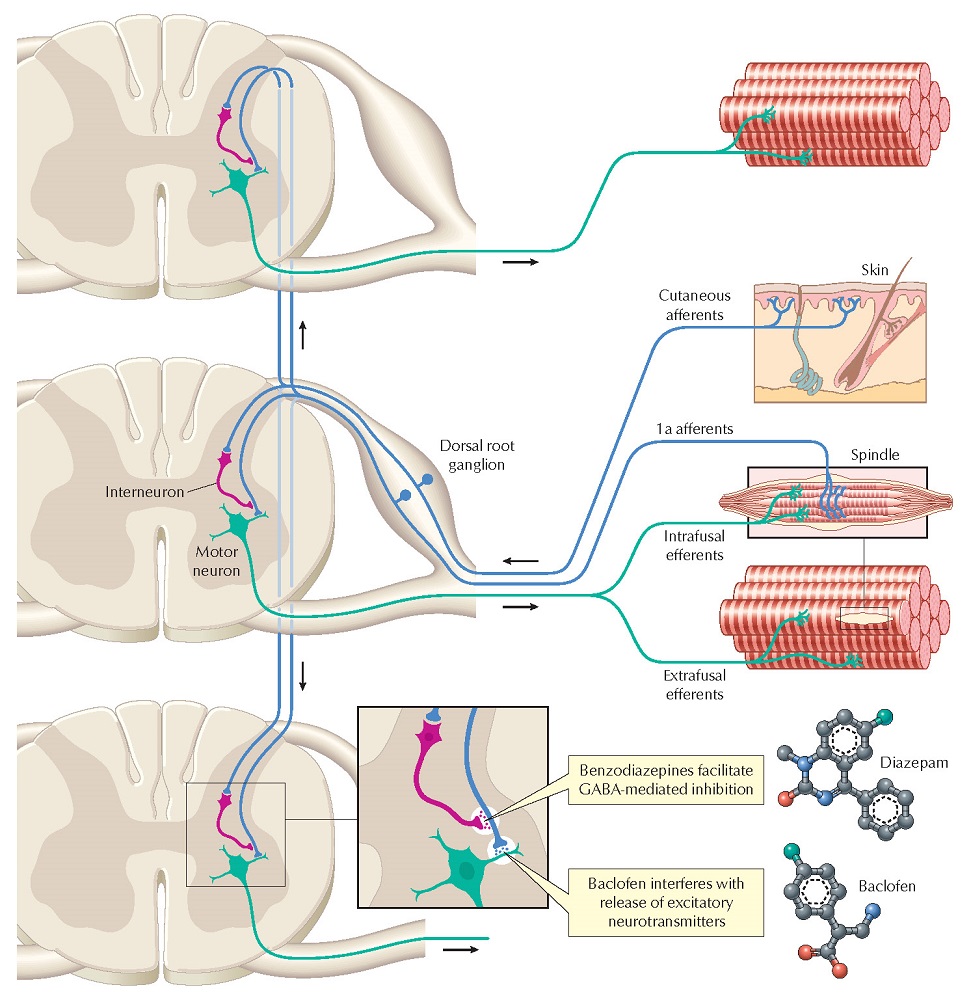Motor Neurons
and Drugs
Skeletal muscle spasticity often results from neuronal, not muscle, deficits. The reflex arc involved in coordinated skeletal muscle action involves several neurons, including interneurons, in the spinal cord. These spinal polysynaptic reflex arcs are depressed by a number of drugs, including barbiturates. However, nonspecific depression of synapses is not desirable because normal muscle function can be disrupted.
More specific agents, including CNSacting drugs, are preferred.
Benzodiazepines allosterically
facilitate GABAmediated Cl− influx (Figure 39) throughout the CNS,
including the spinal cord. They are used for muscle spasm of almost any cause
but can also produce excess sedation. Baclofen is a GABAB receptor
agonist that hyperpolarizes neurons by increasing K+ conductance.
Other CNSacting antispasmodic agents include α2adrenoceptor
agonists (eg, tizanidine), GABAA and GABAB receptor
agonists, and the inhibitory amino
acid Gly.





